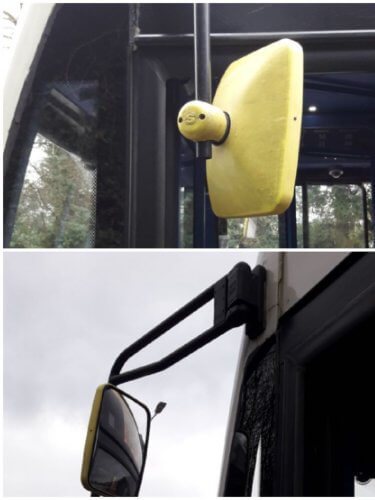
Following the article in issue 1457 by Kostas Poulos of Pailton Engineering about cab ergonomics, a driver who wishes to remain anonymous got in touch to reinforce the importance of good workstation design.
“Kostas Poulios’s article was a welcome step forward in acknowledging the link between poor cab design and musculoskeletal pain – and it provided a glimpse of possible future solutions. I’ve long tried to raise the issue of the health problems associated with professional driving and to push for improvements.
“Kostas described how adjustable cab equipment goes a long way to alleviate the problem, and he’s absolutely correct in saying the entire vehicle cab should be as ergonomic and adjustable as the conventional office workplace.
“Manufacturers and operators need to consider everything from a driver’s perspective, and in my five years driving buses, including a spell as Health & Safety rep, I’ve seen good and bad design – and experienced how it can impact on health and well-being of drivers. There appears to be a wealth of guides and legislation specifically on ‘workstation assessments’ for people using a computer at a desk, but if you substitute an office desk for a driver’s seat, H&S guidance becomes less specific and somewhat generic.
“Mirrors are one of the ways drivers take observations. The ease of use, and whether you can use them in a sustained fashion without causing neck pain, can depend on them being fitted in a comfortable position for viewing, and even identical models of the same bus can vary.
“Take a look at this picture (below right) showing the positions of the nearside mirrors on two common buses. With one of these mirrors, the driver has to do a near-90° turn of the head, because it’s viewed through the passenger door. Compare it to the forward-set mirror on the other bus, it is much less of a twist on the neck; probably 45°.
“With training schools teaching mirror checks every six or seven seconds, this can demand at least 2,600 twists of the neck when we are at the wheel for the five and a half hours that is permitted under domestic rules. For some drivers, this results in neck and shoulder strain, so it can be appreciated how important well-positioned mirrors are.
“Then there’s what operators do to the vehicles once in their possession and adaptations that occur later. For example, we need to operate ticket machines without excessive twisting, yet I’ve encountered them positioned at my left elbow, at a 90-degree angle to the seated position. You wouldn’t position a computer screen at 90 degrees to a keyboard, but this is effectively what we’re being expected to do. It’s difficult to operate comfortably, and impossible to see the clock on it, which is important when you’re running a bus service.
“Then there’s the modifications that hinder the driver, like a metal strip being placed at the top of an assault screen, blocking the view to the nearside mirror (we’re using the screens at the moment because of Covid-19). Yes, you can adjust your seat height to counter it, but then the body is compensating for this because it is not in the optimum position for comfort. This is when we can start to experience pain and discomfort.
“Drivers need to play their part and report the problems, otherwise the issue is invisible. The result can be a disconnect between those responsible for designing and maintaining fleets, and those that have to use them. Hopefully manufacturers and operators will put this higher up the agenda.”

